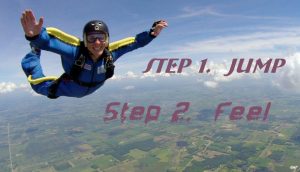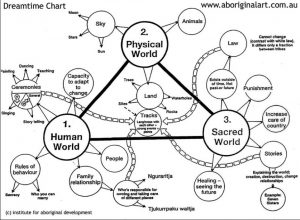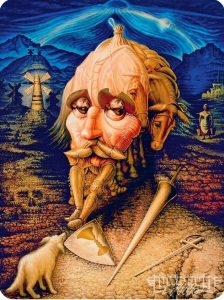 There are word lessons and there are world lessons. Word lessons talk about experience and world lessons are the experiences. Word lessons are used to describe something or to suggest a way to experiment in order to experience something. Teaching provides a framework that puts boundaries around a subject and a procedure to follow so that a student might be able to experience something, but instructing a student to experience something specific leads to indoctrination.
There are word lessons and there are world lessons. Word lessons talk about experience and world lessons are the experiences. Word lessons are used to describe something or to suggest a way to experiment in order to experience something. Teaching provides a framework that puts boundaries around a subject and a procedure to follow so that a student might be able to experience something, but instructing a student to experience something specific leads to indoctrination.
Everybody has their own experiences and while they may have similarities to that of the teacher they are still unique to the person. A good teacher may recognise a state of being, or awareness within the student, but still the student has their unique experience and interpretation. Remembering this is of vital importance for both the student and the teacher.
How a teacher uses words to convey the value, understanding and the process of the lesson is unique to the teacher as is the ability of the student to absorb the material and translate it into the action required to complete the experience. The deeper and more profound the experience is the more reliant it is on both student and teacher. For this reason it is better to spend adequate time to delve into the subtleties of the exercise than to dive immediately into it.
Here is an interesting insight, a person has to switch off to the words before they can begin to experience. If you keep referring to the instructions, the words, you will only experience the words not the experience the words are pointing towards!
 Many of the traditions, including Buddhism, Hinduism and others consider the experiential universe as illusory, Maya or as a dream. Toltec may go even further by perceiving the world as a waking dream. It is a dream but we are awake within it, and so it is a lucid dream. It is lucid but by assigning it a quality of realness it becomes limited by that same realness. The energy (E) is divided by its component parts (Time and Space) giving rise to solid form or matter (M). If we are to release the matter back into its original energetic state we must begin to see time and space as the basic limitations they truly are. By doing so we discover that material things are those things which have captured our attention.
Many of the traditions, including Buddhism, Hinduism and others consider the experiential universe as illusory, Maya or as a dream. Toltec may go even further by perceiving the world as a waking dream. It is a dream but we are awake within it, and so it is a lucid dream. It is lucid but by assigning it a quality of realness it becomes limited by that same realness. The energy (E) is divided by its component parts (Time and Space) giving rise to solid form or matter (M). If we are to release the matter back into its original energetic state we must begin to see time and space as the basic limitations they truly are. By doing so we discover that material things are those things which have captured our attention.
Research into dream states has shown that every aspect of the dream is related to the interior structure of the dreamer's world. Techniques have been developed to help a person discover the meaning of these representations and arrange them in a cohesive manner in order to bring understanding to the overall message being conveyed from the unconscious fields of the psyche. The relevance of these messages can provide insights into the current conditions that the person is encountering in their daily life, and give direction on how to proceed, where decisions might lead.
It might be said that the dream landscape is free to explore when the conscious mind is in an asleep state and is not interfering. The exploration might consist of trials of different ways of approaching a developing situation, or even a reminder of the need to take strong and definitive action.
There have been many books written about dreaming and even dictionaries giving meanings to various symbols that often turn up in these dreams. Such dictionaries can be useful as a guidance to what a symbol can mean but they are often approached as if they are accurate and immutable.
Toltec is less interested in the meanings of the symbols as it is to the lucidity accomplished. The important value is to wake up in the dream, which is not the same as waking up from the dream. Waking up in the dream is becoming fully awake while dreaming, knowing that you are dreaming, and staying in the dream. By doing this you become able to do things which are not usually feasible in the physical world of limitations. Many people have remembered the experience of flying in their dreams but only the memory of it, not the actuality of doing it.
 The Toltec view of the experiential world suggests that it too is a pure reflection of the individual and that every element in it is a symbolic representation of aspects of that person's illumination. We often hear that the world is one of duality, but it is better represented by the term polarity. The fundamental polarity is between light and dark. What you can see is the relativity between these two. If it were all light or all dark there would be nothing of distinction. In the same way if everything were background (or foreground) nothing would stand out, it is attention that brings it to the front. Something stands out because we give it attention, it captures our attention. Not only does it capture our attention, it captivates us, makes us captive to it. Ultimately it is this that makes the physical world solid.
The Toltec view of the experiential world suggests that it too is a pure reflection of the individual and that every element in it is a symbolic representation of aspects of that person's illumination. We often hear that the world is one of duality, but it is better represented by the term polarity. The fundamental polarity is between light and dark. What you can see is the relativity between these two. If it were all light or all dark there would be nothing of distinction. In the same way if everything were background (or foreground) nothing would stand out, it is attention that brings it to the front. Something stands out because we give it attention, it captures our attention. Not only does it capture our attention, it captivates us, makes us captive to it. Ultimately it is this that makes the physical world solid.
During a normal day most things remain in the background. If you see the world from a point at the back of your head almost nothing will stand out. If something takes your attention streams outward and sticks onto it making it real. Voice dialogue works exceptionally well with bringing meaning to the literal world.
Contact the author if you would like coaching using this technique.